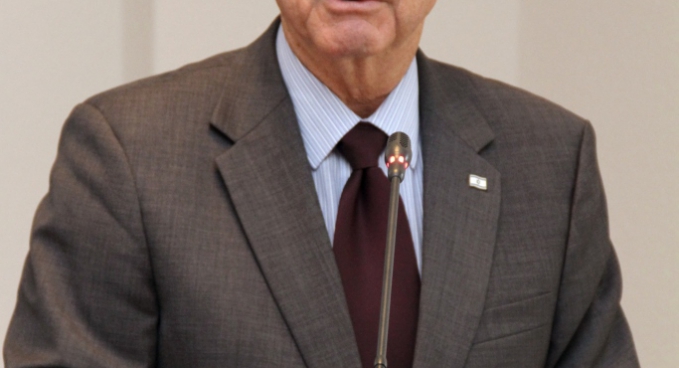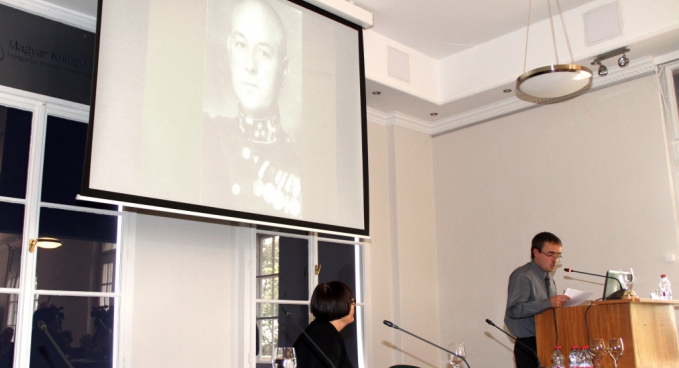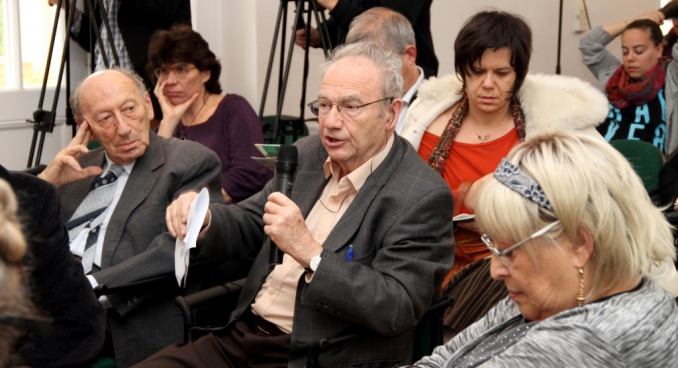Messages of Hungarian Rescuers in the 21st Century (Conference)
On 30 October the Tom Lantos Institute and the Institute for Foreign Affairs and Trade co-organised a conference titled “Knowing Who, Knowing Why – Messages of Hungarian Rescuers in the 21st Century”. The aim of the conference was to commemorate and show the examples of those heroes who risked their lives in order to save others in a time when the majority did not stand up for their fellow Hungarian citizens or collaborated with the persecutors. By means of historical, sociological, cultural, literary and pedagogical presentations the conference examined the lives of Hungarians who received the Righteous Among the Nations Award.
Anna-Mária Bíró, Director of TLI praised those extraordinary people who resisted the commands of the Hungarian state and the German occupiers, thus becoming subjects of persecution themselves. She emphasised that the moral greatness of the rescuers cannot be discussed without recognising the Hungarian state’s responsibility in the Holocaust, in the course of which the state betrayed its own Hungarian citizens.
Ilan Mor, the Ambassador of the State of Israel to Budapest said that although the Holocaust brought to surface the rescuers’ imposing qualities, their story remained marginal amidst the horrible crimes committed during that age. He emphasised that most of the Jews had not been saved. To this day 25 000 rescuers have received the Righteous Among the Nations Award, out of whom 900 are Hungarian.
Dr. Annamaria Orla-Bukowska, Professor of the Jagiellonian University of Krakow analysed the complex, often ambiguous and contradictory perspectives of survivors and presented the process of identifying the rescuers for the Righteous Among the Nations Award. Dr. László Csősz, historian at the Hungarian National Archives talked about the historical and political context in which the rescues took place, bringing concrete examples of people from different walks of life who risked their lives for others.
Dr. Mónika Kovács, Vice-Dean of the Education and Psychology Faculty of the Eötvös Loránd University in her presentation examined the social and psychological driving forces of individual decisions which resulted in members of society becoming rescuers, perpetrators and bystanders. She also analysed the different dynamics of collective and individual memory.
The presentation of György Vári, critic and literary historian, Lecturer at WERK Academia explored the theme of rescuing in Hungarian literature, and gave a detailed analysis of complex characters whose deeds can be interpreted as rescuing. Following his lecture, Andrea Szőnyi, Director of the Zachor Foundation for Social Remembrance, and Chief Educational Advisor of the USC Shoah Foundation demonstrated how children can be brought closer to what the Holocaust was, through various activities, including watching and discussing short interviews made with survivors. Annamária Buda, Director of the Diaconal Department of the Lutheran Church of Hungary talked about the role of the church in the rescuing activity, presenting examples from different denominations.
Finally, a short film, “The Mayor of Hell” was screened by Marcell Kenesei, Director of the Centropa Foundation, telling the story of the life of Captain Miksa Domonkos who despite his Jewish origins played a significant role in the rescues in Budapest and became a victim of a show trial after the war.
The closing event of the day was the opening of the photo installation dedicated to Hungarian rescuers with the remarks of the Ambassador of the State of Israel, Ilan Mor. The installation titled “Our Street” was curated by Fanni Magyar. It shows a selection of portraits highlighting the varied social backgrounds of the rescuers and the well-known urban scenes where their acts took place. It reminds us of the fact that the history of the rescuers, the rescued and the victims is also ours.
Photos: Anna Fischer








